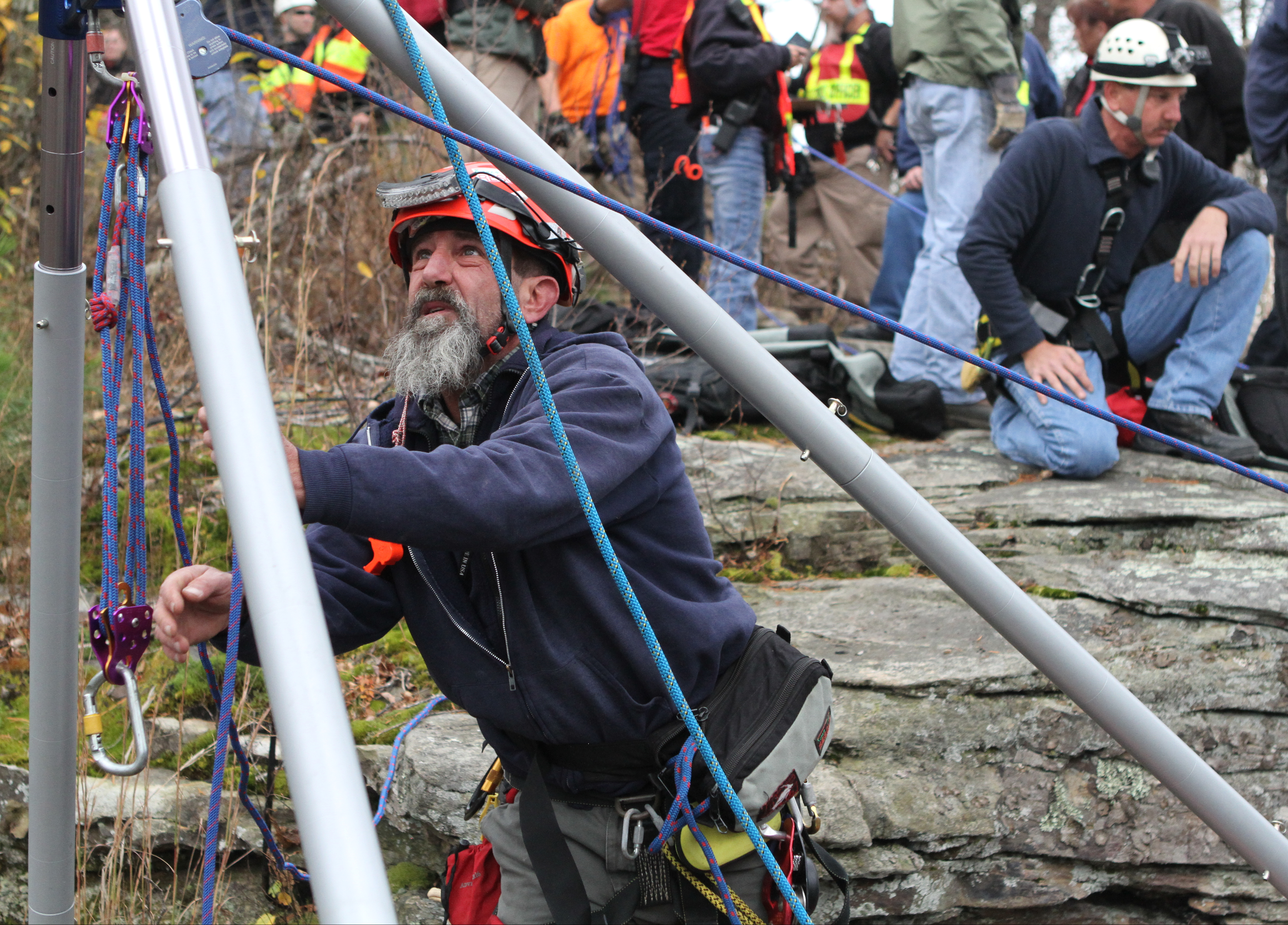HIKING TIPSPreparation: Know the difficulty, length and context of the area you plan to hike.Outfit: Dress accordingly, sturdy shoes are a must.Hydrate: Hiking is exercise and exercise requires proper hydration.Surroundings: Stick to the trail. Most incidents happen off the trail. Also, take stock of what's around, look before heading into unmarked territory.Source: Sale Creek Volunteer Fire Department
Bruce Smith was telling stories about his 27 years of technical rescue missions - which require ropes crews to reach a victim when his emergency radio crackled.
He tweaked one of the radio's dials and showed off a 45-name list on its front with corresponding contact numbers.
Smith found his channel and a voice came through clearly: "We have a 70-year-old male with a broken leg."
Well, not really.
It was fake, a prompt for rescue training exercises.
All out on the side of Sale Creek Mountain at Cumberland Trail State Park on Saturday morning.
Emergency responders from all over Hamilton County -- 75 of them -- took part in the four hours of technical rescue mission training. Tennessee State Parks officials organized the training.
Half a mile into the Cumberland Trail State Park area, rescuers carried ropes, belays, an ultra-light-weight titanium rescue basket and other tools for precarious retrievals.
You have to be ready around here, said Jim Aslinger, Sale Creek Volunteer Fire Department chief.
"We have lakes, we have creeks, we have mountains, we have the river," said Aslinger. "We have to be prepared for a number of things."
Not to mention that this is the part of the Unites States where a lion's share of technical rescues happen, because of the geography. It's nicknamed the TAG area -- Tennessee, Alabama, Georgia -- and tech rescuers everywhere know its reputation.
Take May 26 of this year, for instance.
Dwight Kempf, a 54-year-old Pennsylvania man, slipped and fell into a deep pit at Ellison's Cave, near LaFayette, Ga. He was several hundred feet down a hole in Pigeon Mountain and his friends couldn't reach him.
The largest technical cave rescue in nearly 90 years followed.
Against unfavorable odds, emergency personnel were able to reach Kempf. More than 10 inches of Kempf's femur was protruding from his leg when they arrived. It took more than 100 personnel and a few attempts to bring him to the surface.
But they got him.
And Kempf not only lived, he walked his daughter down the aisle at her wedding recently. Without a cane.
Because his rescuers knew what they were doing.
"It was massive. It was a miracle," Smith said. He was not at the rescue, but he still acts as treasurer for the Chattanooga-Hamilton County Rescue Services and was a rescuer for years.
Tom Vines, a coordinator with the International Tech Rescue Symposium, agrees. He recommended this year's symposium -- an annual gathering of the top minds in tech rescue -- feature the Kempf operation at this year's meeting in Albuquerque, N.M.
And they did, coincidentally, on Saturday, while some of the very men who rescued Kempf practiced saving patients on Sale Creek Mountain.
"From what I've seen this definitely was a lifesaving operation," Vines said of Kempf's rescue.
He said cave rescues are generally more difficult than other technical rescues and less common.
"To me, a cave rescue is much more complicated than people can imagine," he said. "When they happen, they can be quite a challenge. People who are not cavers don't really appreciate what needs to go into a cave rescue."
But before any rescue, cave or otherwise, there is a laundry list of things that have to happen. Under Tennessee law, a fire chief or his designee on-site is in charge of rescue operations.
That means responsibility for big decisions, which may have far-flung consequences. At a time like that, it's good to know who's on your side.
"You have to be able to understand the resources that are available to you," Aslinger said. "When you know your resources, you know who's available to you. You know the people to call for the right thing."
Different departments, different specialties. Different people. Different experiences working together.
It's why rescuers think training like Saturday's gives them a leg up when there is an emergency for real.
"You can put a name with a face when you're out working an emergency," said Aslinger. "You can add that to the Rolodex in your head."
And the one on your emergency radio.
Contact staff writer Alex Green at agreen@timesfree press.com or 423-757-6731.

